1895 "Plunging Challenge Shield" From London's
Historic Bath Club
Having Both Intrinsic and Historical Value, This Is An Absolutely Outstanding One-of-a-Kind Antiquity from 19th Century London England.
Originating from London's "Bath Club" (swim club) in 1985, this large "Plunging Challenge Shield" once adorned the walls of the club in the presence of Royals, Authors, Athletes, Scholars, and England Elite alike.
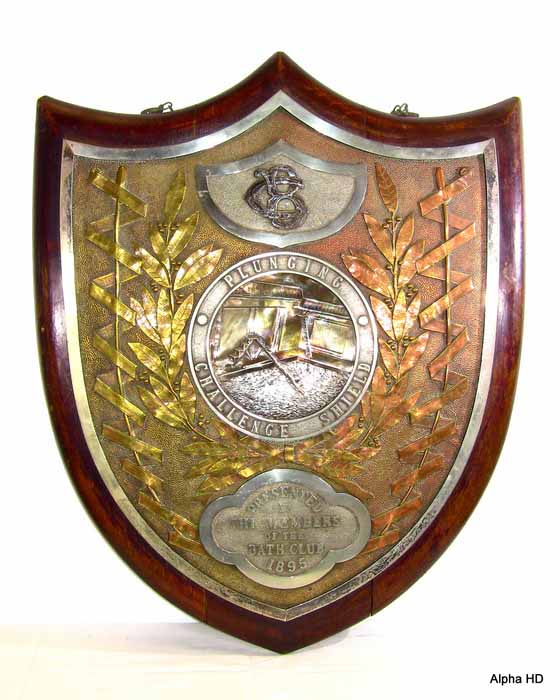
The Bath Club was a sports-themed London gentlemen's club established in 1894 at 34 Dover Street in London.
Its grand swimming pool was its noted feature and thought to be based on the fictional Drones Club Pool of British comic writer P. G. Wodehouse (also located on Dover Street).
"The King (Edward IV) accompanied by the Queen (Alexandra) and Princess Victoria visited the Bath Club in Dover street and witnessed a swimming display notably the opening competition for the cup presented by him for life-saving. There was a Polo display in which their Majesties were intensely interested. The Queen stood up at times to get a better view of it." Source: The Sphere - July 18, 1903 (see in photos).
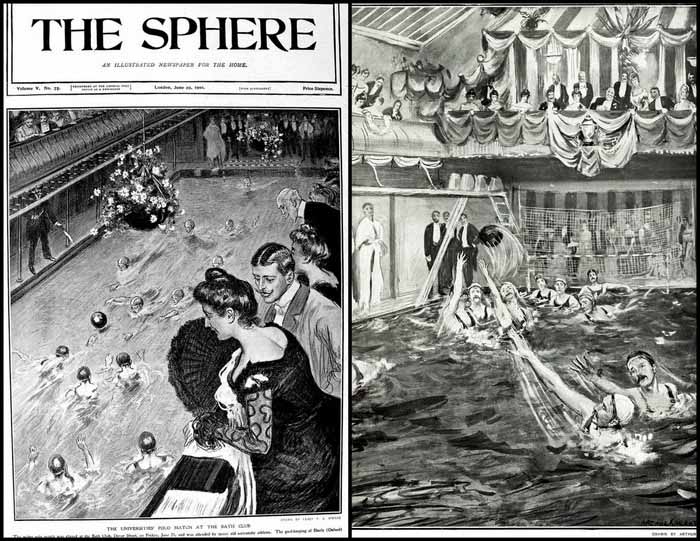
Mark Twain stayed at the Bath Club when visiting London. American-born British Conservative politician, author and diarist Sir Henry "Chips" Channon was a member. Women were able to attend the club although required to enter through a separate entrance and unable to have use of the residences.
The club building was hit by bombs during the Blitz in 1941. After the bombing, the club went through several transformations (in different location) and closed in 1981.
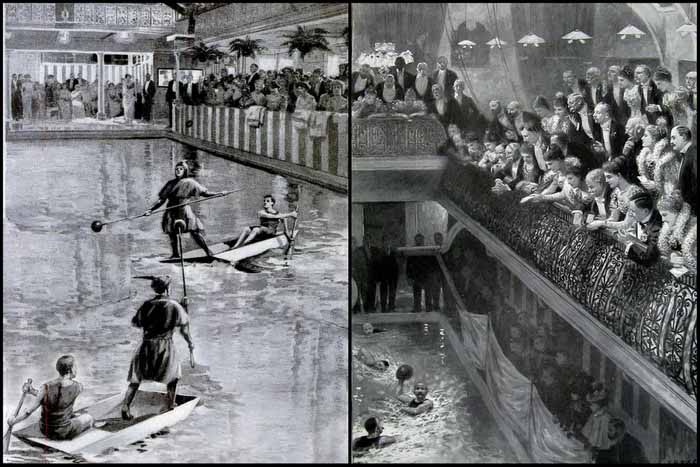
These artist drawings are all of the original Bath Club between 1901 and 1903 as cameras were not yet feasible. The shield hung somewhere on the walls of the club during this time and was certainly admired by members and attendees alike.
The club held numerous pool competitions and events such as polo and swimming along with an event called "Plunging" which was a form of diving.

Not only is it a piece of iconic English History, it was created by the esteemed D. George Collins Silversmith Company! The company has produced some of the world’s finest silver pieces sought by collectors worldwide.
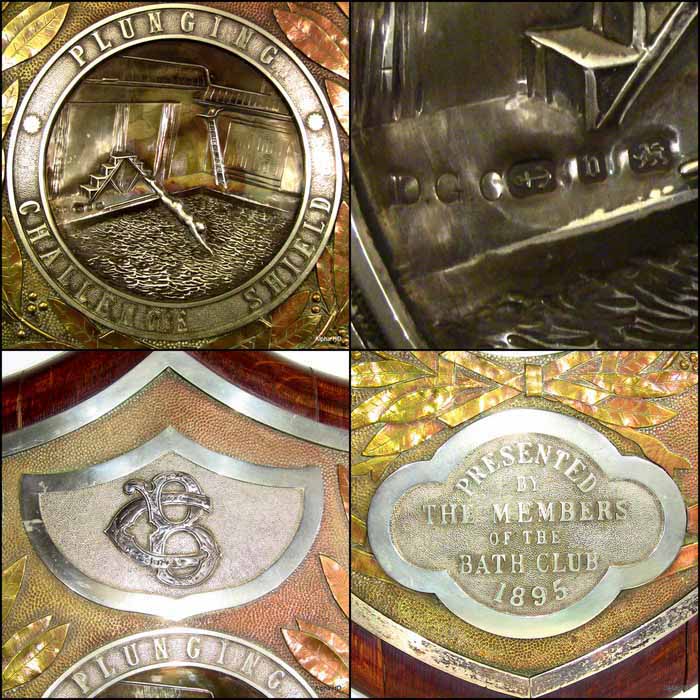
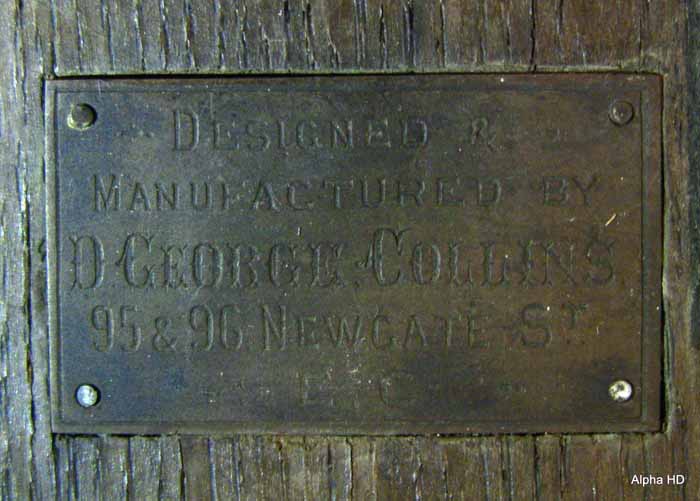
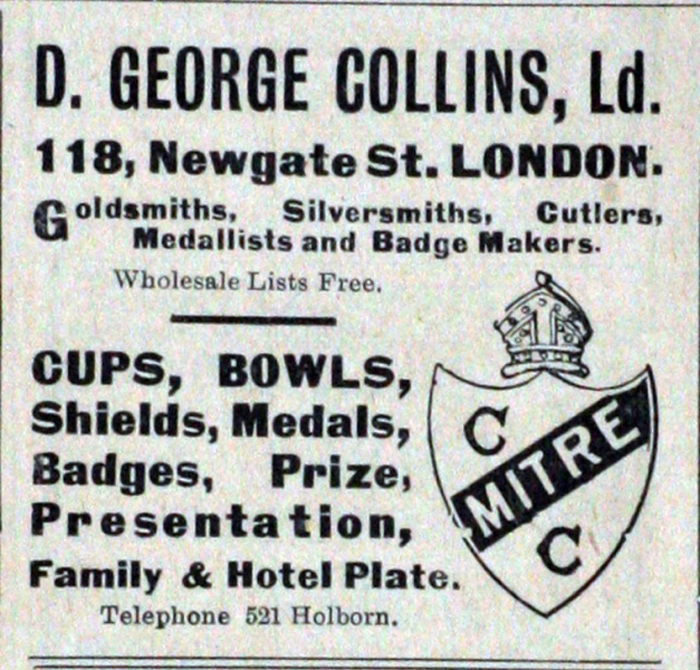
PLUNGING: The plunge for distance is a diving event that enjoyed its greatest popularity in the 19th and early part of the 20th century, even being included as an official event in the 1904 Summer Olympics. By the 1920's, it began to lose its popularity and slowly disappeared from U.S. and English swim competitions.
The center shield is flanked on each side with a ribbon of engraved plunge challenge winners' names.
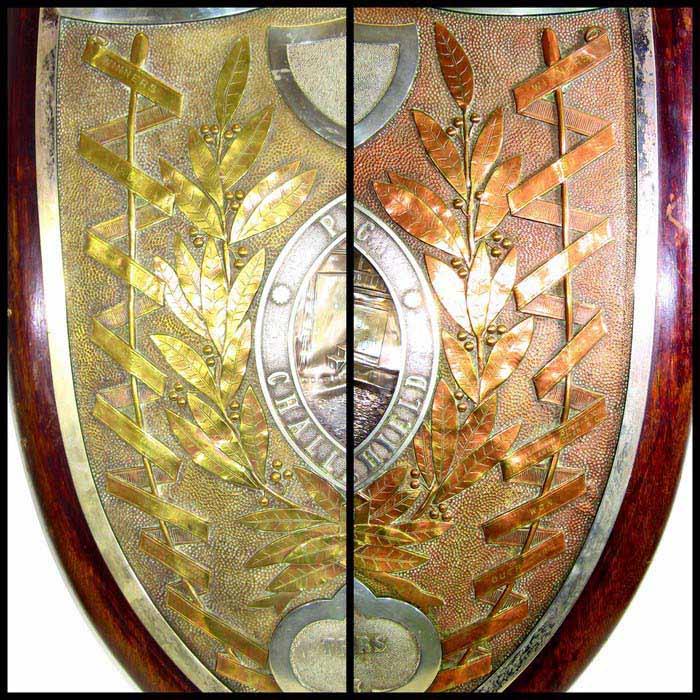
The Winner Names Recorded on the Plaque:
1896, 1897, 1898; W. Henry - Bath Club, H. A. Wilson - Woodside S. C.
1899, 1900; H. W. Allason - Otter S. C., H. W. Allason - Otter S. C.
*S. C. is the abbreviation for Swim Club
Cambridge Records indicate H. W. Allason was a competitive swimmer for Trinity Hall and later the president of the Cambridge University Swim Club
H. W. Allason is seen here as a member of the Polo Team.
1892: The Cambridge University team
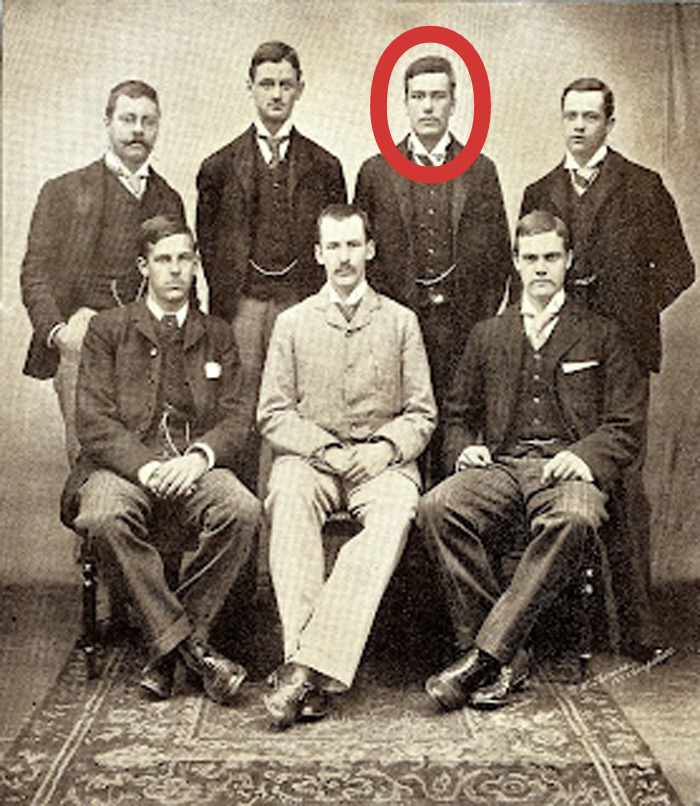
The 1892 Water Polo team of Cambridge University. Standing L-R: J.C. Graham, J.B. Hoare, H.W. Allason, H.Smith. Seating L-R: H.M.King, A.T.Masterman, G.Franklyn.
Source: The Illustrated Sporting and dramatic news, July 2, 1892
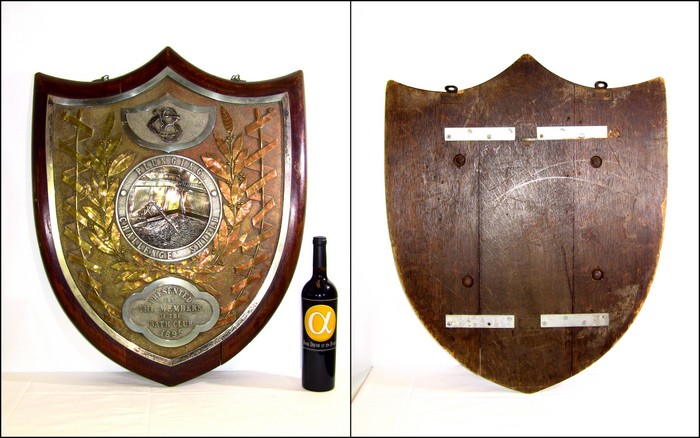
The shield is comprised of a combination of metals with the circular centerpiece of the shield (diver image) and the "BC" lettering above the centerpiece, carrying silver marks from D. George Collins. The wood mount is comprised of 3 solid oak planks making it a rather heavy piece. Approximate Measurements are 29.5" x 24", and weighing 33 lbs.
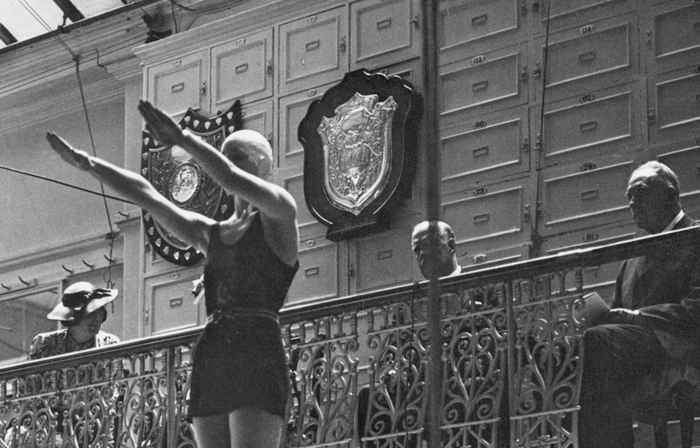
A similarly designed plaque hanging (left) in the Bath Club on June 24, 1938 (a different piece, 38 years later). Lord Desborough and Sir John Wilson Taylor watching the Hon Beatrice Grosvenor diving from the 8ft board during the 'Ladies' and Children's Annual Swimming Competitions. (Photo by Topical Press Agency/Hulton Archive/Getty Images)

Princess Elizabeth And Margaret In London
A chauffeur holds the door of a limousine for Princess Elizabeth (later Queen Elizabeth II 1926 - 2022) and Princess Margaret as the royal sisters leave the Bath Club in Dover Street, London on 11th May 1938. (Photo by Paul Popper/Popperfoto via Getty Images)
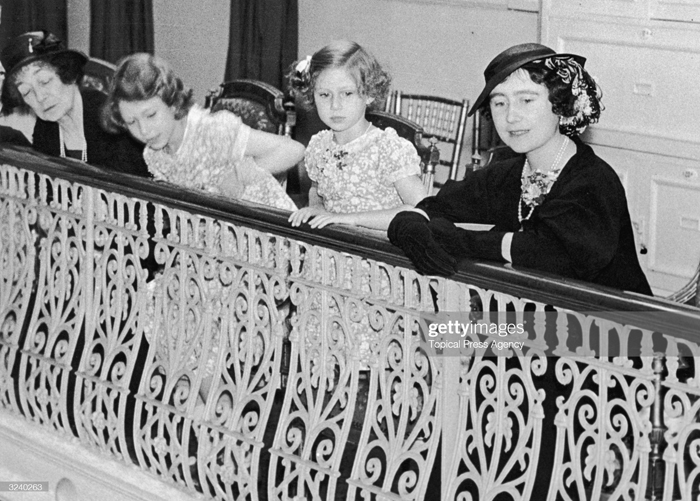
Balcony Royals
7th February 1932: Queen Elizabeth at the Bath Club with her daughters Princess Margaret (1930 - 2002) and Princess Elizabeth (later Queen Elizabeth II 1926 - 2022). The princesses later learned to swim here. (Photo by Topical Press Agency/Getty Images)